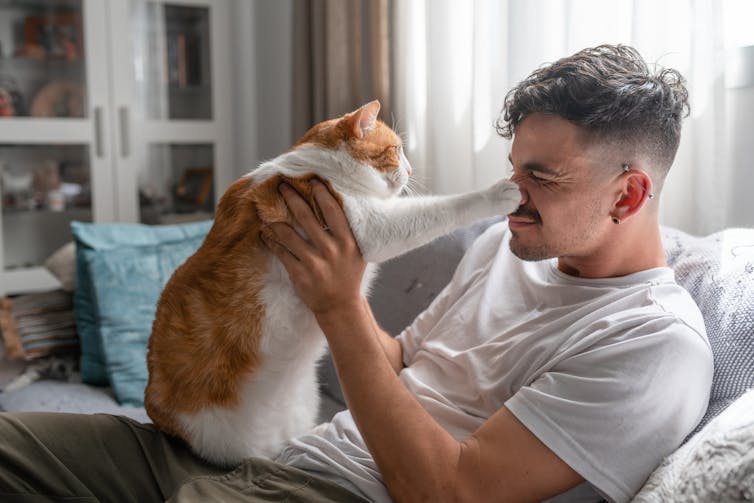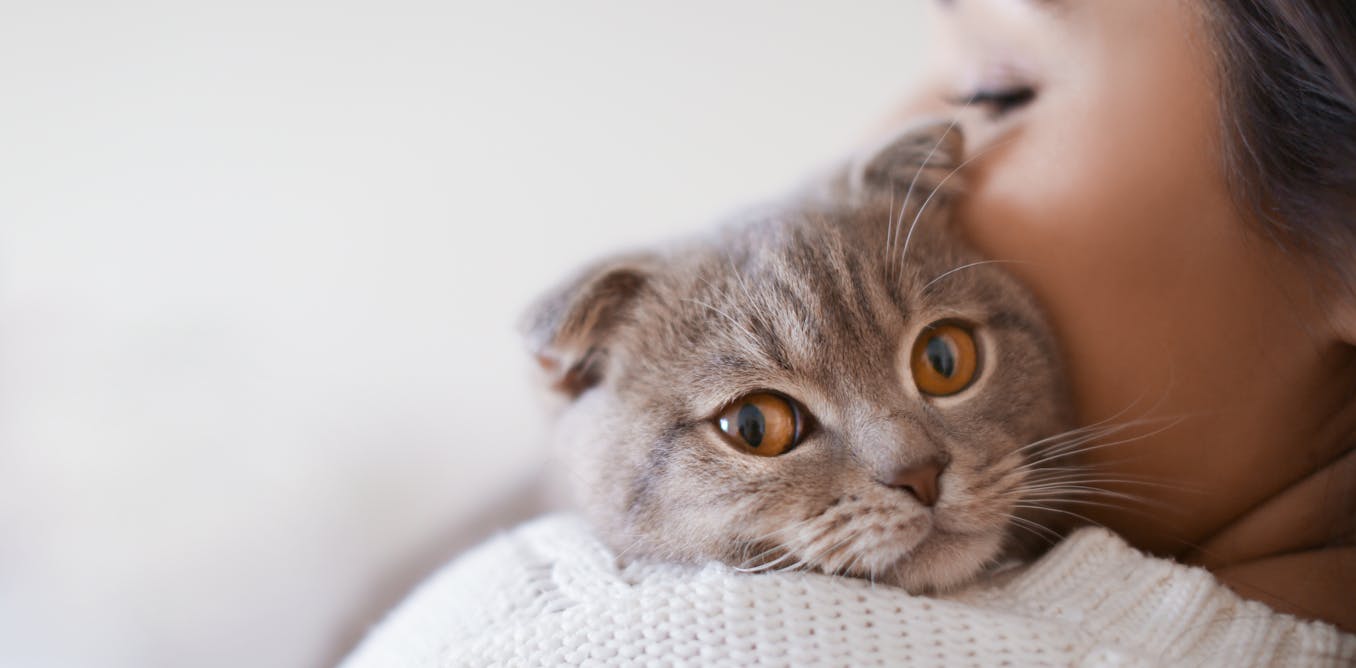[ad_1]
It is a story that goes as soon as extra 1000’s of years.
Initially, cats had been solitary creatures. This means they hottest to stay and hunt alone, significantly than in teams. Most of their social behaviour was restricted to mother-kitten interactions. Outside of this relationship, cats not usually meow at one another.
Nonetheless, as cats started to stay alongside people, these vocalisations took on new meanings. In some strategies, when a cat meows at us, it’s as inside the event that they see us as their caregivers, just like their feline moms.
Cats probably first encountered people roughly 10,000 years to date, when folks started establishing everlasting settlements. These settlements attracted rodents, which in flip drew cats in quest of prey. The lots a lot much less fearful and additional adaptable cats thrived, benefiting from a relentless meals current. Over time, these cats developed nearer bonds with people.
Not like canines, which had been bred by people for express traits, cats principally domesticated themselves. People who may tolerate and communicate with people had a survival revenue, resulting in a inhabitants well-suited to dwelling alongside folks.
To know this course of, we’re going to try Russian farmed fox experiments. Starting all through the Fifties, Soviet scientist Dmitry Belyaev and his workers selectively bred silver foxes, mating people who had been lots a lot much less fearful and aggressive in route of people.
Over generations, these foxes turned additional docile and good, rising bodily traits very like domesticated canines, very similar to floppy ears and curly tails. Their vocalisations modified too, shifting from aggressive “coughs” and “snorts” to additional good “cackles” and “pants”, paying homage to human laughter.
These experiments demonstrated that selective breeding for tameness may finish in a variety of behavioural and bodily modifications in animals, reaching in a number of a number of years what would often take 1000’s of years. Although lots a lot much less apparent than the variations between canines and the ancestral wolf, cats have furthermore modified since their days as African wildcats. They now have smaller brains and additional quite a few coat colors, traits frequent amongst many home species.
Cats’ vocal variations
Much like the silver foxes, cats have tailored their vocalisations, albeit over a for for for much longer time interval. Human infants are altricial at start, which suggests they’re utterly counting on their mother and father. This dependency has made us notably attuned to misery calls – ignoring them may probably be expensive for human survival.

Magui RF/Shutterstock
Cats have altered their vocalisations to faucet into this sensitivity. A 2009 have a look at by animal behaviour researcher Karen McComb and her workers provides proof of this adaptation. Contributors all through the have a look at listened to 2 forms of purrs. One selection was recorded when cats had been looking for meals (solicitation purr) and one totally different recorded as quickly as they weren’t (non-solicitation purr). Each cat house owners and non-cat house owners rated the solicitation purrs as additional pressing and fewer good.
An acoustic evaluation revealed a high-pitch part in these solicitation purrs, resembling a cry. This hidden cry faucets into our innate sensitivity to misery sounds, making it nearly unattainable for us to disregard.
Nevertheless it absolutely completely’s not merely cats which have tailored their vocalisations: now we have got too. As quickly as we discuss to infants, we use “motherese”, additional usually usually known as “child discuss”, characterised by the next pitch, exaggerated tones and simplified language. Such a speech helps work collectively infants, collaborating in a job of their language enchancment.
We’ve prolonged this kind of communication to our interactions with pets, usually known as pet-directed speech. Current analysis implies that cats reply to this kind of communication. A 2022 have a look at by animal behaviour researcher Charlotte de Mouzon and colleagues discovered that cats may distinguish between speech addressed to them and speech addressed to grownup people. This sample of discrimination was notably sturdy when the speech acquired proper right here from the cats’ house owners.
Our adoption of pet-directed speech reinforces a bond that mirrors mother-kitten interactions.
Modifications in vocalisations are sometimes not solely seen in cat-human relationships. As in contrast with the ancestral wolf, canines have expanded their barking behaviour to speak additional effectively with people and, merely as with cats, we use pet-directed speech when interacting with canines.
Over time, cats have developed to make the most of vocal alerts that resonate with our nurturing instincts. Paired with our use of pet-directed speech, this two-way communication highlights the distinctive relationship we’ve developed with our feline buddies. It appears cats may probably be the winners on this relationship, adapting to solicit care and a spotlight from us. Nonetheless, a great deal of cat house owners wouldn’t have it one other methodology.
[ad_2]
